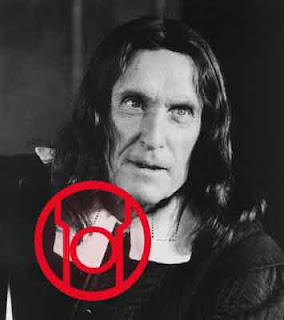For those that don't know, each year the two main comic publishers have what is now called anevent. These events are so large in scope that they touch upon every character currently in print. DC's latest event left some fans disappointed. Last year's event featured a high-concept apocalypse that played with the rules of storytelling and killed Batman. This year's event, The Blackest Night, almost seemed a rehashing of Marvel's "Zombie" franchise three years too late. I, however, thought Blackest Night was great.
The phrase, "struggle between life and death," is tossed around a lot in melodramas, but Geoff Johns used it as the setup for his story. Blackest Night shows the fight against death itself. This is Hamlet's most famous soliloquy in the form of a spandex clad free-for-all. That's it. I know a lot of people weren't crazy about the emotional spectrum of light. To say that all feelings can be broken down to seven emotions (a few of which aren't actual emotions) is a bit of a leap. Ethan Van Sciver, one of Johns's collaborating artists, agrees that referring to the driving forces as emotions seems flawed, he prefers to think of it in terms of motivation. Now, that leaves us with the idea that there are only seven motivating factors in the universe, which is still fallacious.
I want to take it a step further than motivation. I say that the real trick to lighting up a power ring is having a reason to live; after all, the whole story was about fending off death. It's easy to make a case for the positive (hope, compassion, love) and neutral (willpower) motivations. But what about the negative? Can it really be said that hatred, avarice, and fear make life worth living? Yep.
I did not enjoy reading Hawthorne's The Scarlet Letter, I want to get that out of the way early. But, like all dutiful high schoolers, I pushed through it. My memory always catches on one part, and that's the comparison between Hester and Chillingworth, particularly regarding love and hate. The following three sentences come from chapter 24:
Nothing was more remarkable than the change which took place, almost immediately after Mr. Dimmesdale's death, in the appearance and demeanour of the old man known as Roger Chillingworth. All his strength and energy--all his vital and intellectual force--seemed at once to desert him; insomuch that he positively withered up, shrivelled away, and almost vanished from mortal sight, like an uprooted weed that lies wilting in the sun. This unhappy man had made the very principle of his life to consist in the pursuit and systematic exercise of revenge; and when, by its completest triumph and consummation, that evil principle was left with no further material to support it,--when, in short, there was no more devil's work on earth for him to do, it only remained for the unhumanized mortal to betake himself whither his Master would find him tasks enough, and pay him his wages duly.
To paraphrase, hatred was the only thing keeping Roger Chillingworth alive.
Silas Marner, also not one of my favorites, features an outcast gradually transformed by love. But that's not in the first act. The eponymous character begins as an outsider concerned with one thing: his gold. He works harder and harder, later and later in order to earn more wages, which he promptly hides under a loose floorboard. He never spends any, and the only joy he has in life is counting his horde. In chapter 5 he returns home to find his gold missing. He doesn't take it well.
Silas's next appearance follows a lengthy discussion of ghosts and spirits among visitors to the inn. He goes unnoticed at first, then cautiously greeted. His arrival at that point in the conversation and his sudden appearance in the room both mark him as ghost. Without his gold, he's might as well be dead. It isn't until he finds a small, blonde haired child outside his cottage that his spirits lift. The primary reason for this revitalization is because he believes the golden haired girl is his gold given human form. He refuses to part with her, taking her in himself. Hoarding this child as if she were treasure.
In Bruges is a movie I love. It's a darker movie, meditations on life and death and whatnot. Colin Farrell plays a hitman laying low in Bruges, Belgium after a job turns South. Things went bad, really bad. He spends the moving questioning morality, atonement, and the afterlife. To top it all off, he's stuck in Bruges. Everything is history, cobblestones, gas lamps, and too many bridges and canals without a bowling alley to be found.
Nearly everyone is afraid of death to some degree, it's the cornerstone of caution. Colin Farrell's character searches for some reason to keep on living. He finds it in fear. After some bullets find their mark on his person, he is rushed to an ambulance. All he can think of is whether or not there is a hell, and if so, what if it's like spending an eternity in Bruges. He no longer wants to die.
I know, now the response is, "there are more than seven reasons to live." Fine, there are. But only seven can manipulate that particular type of energy. If you don't like that answer, I suggest you try to plug a lamp in to the socket using string instead of copper wiring. Lots of things conduct electricity, but some are better conduits than others.


